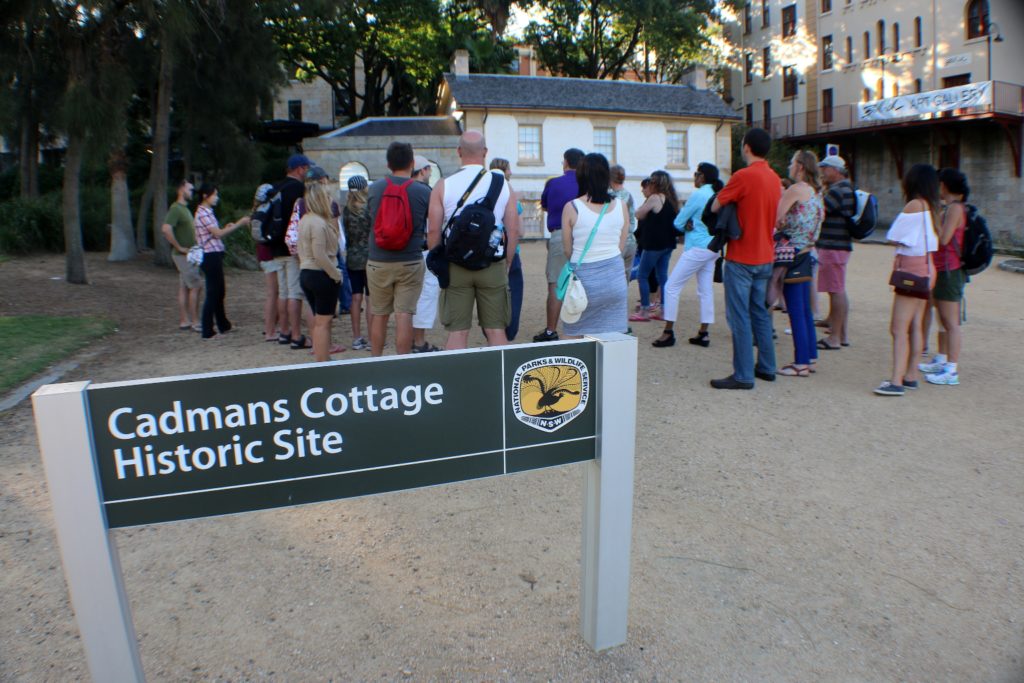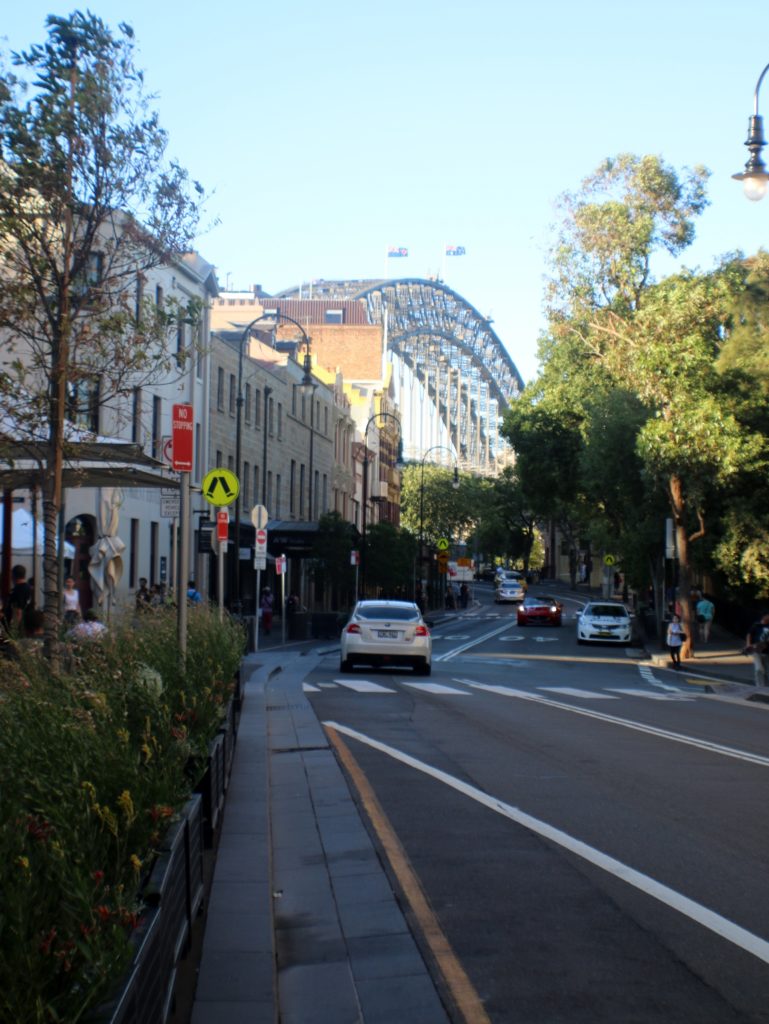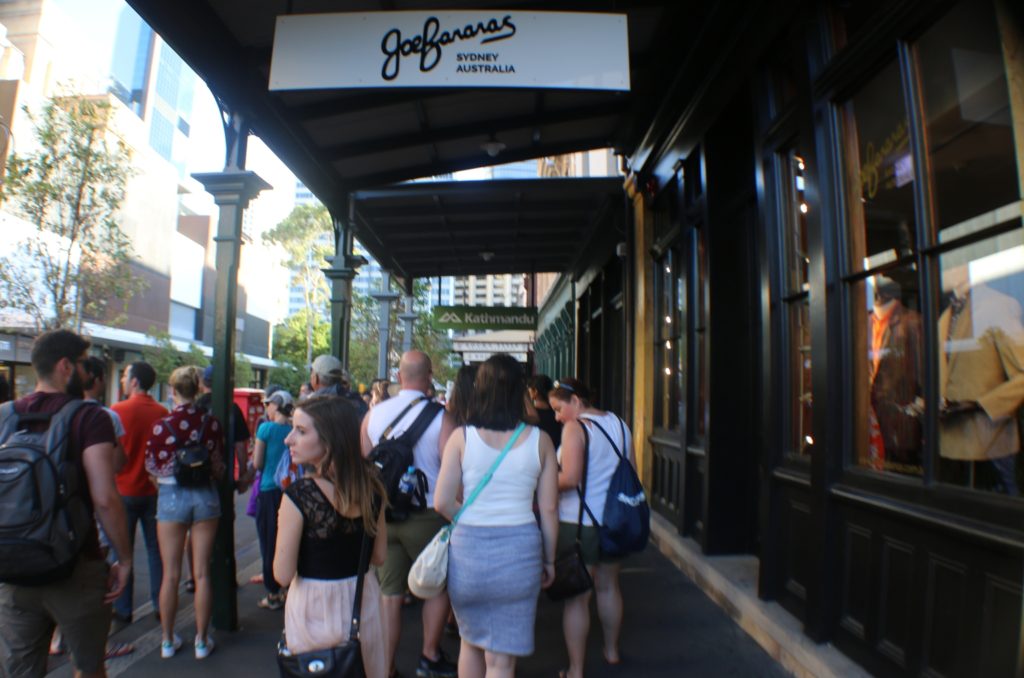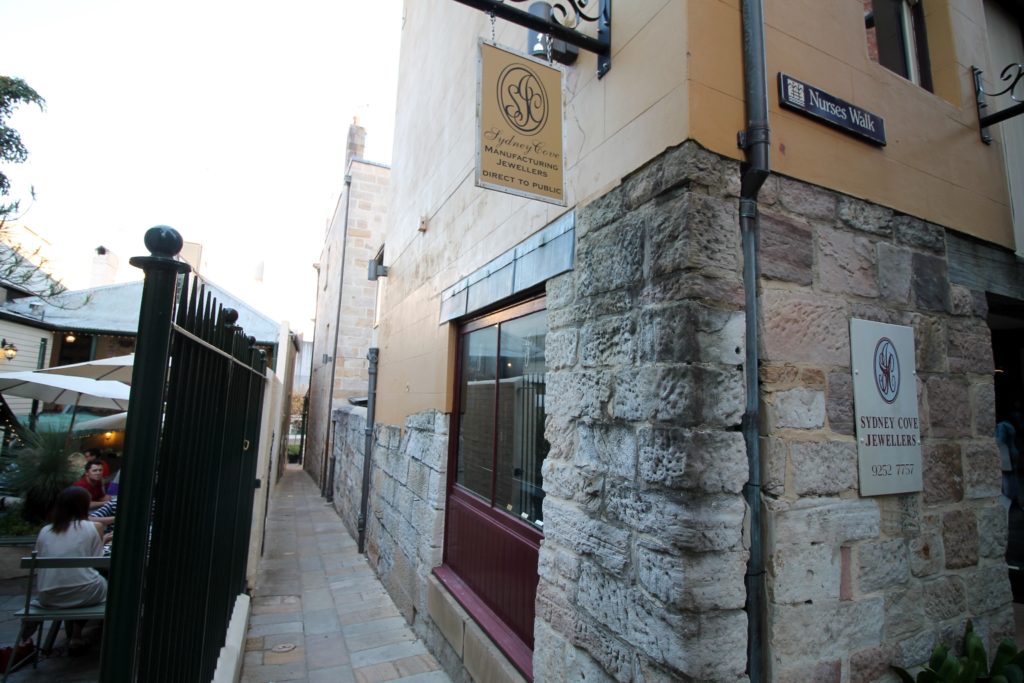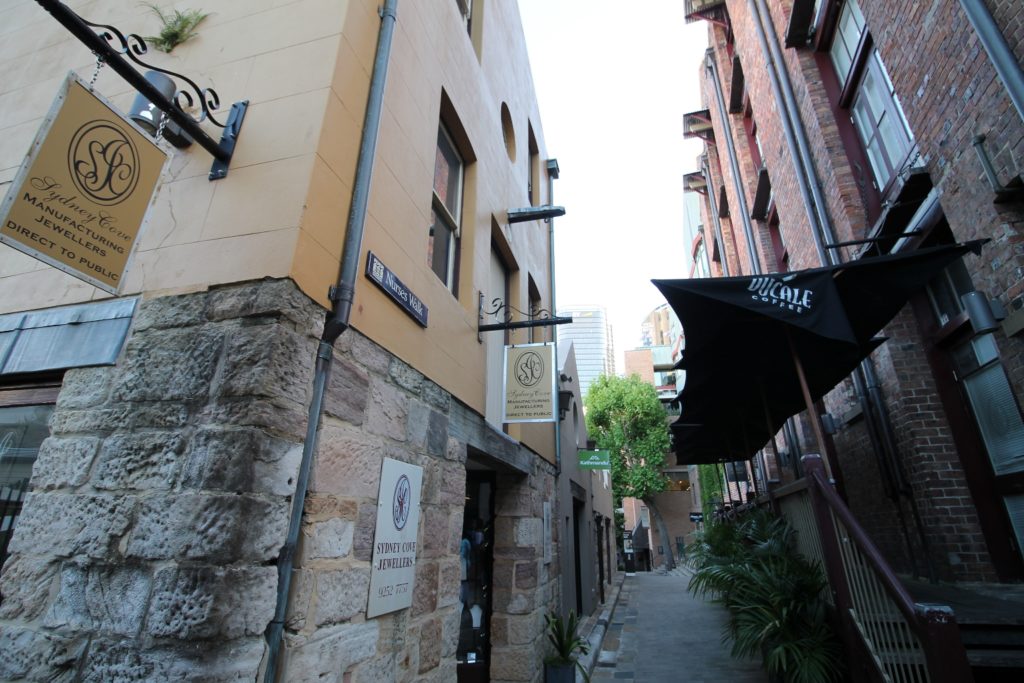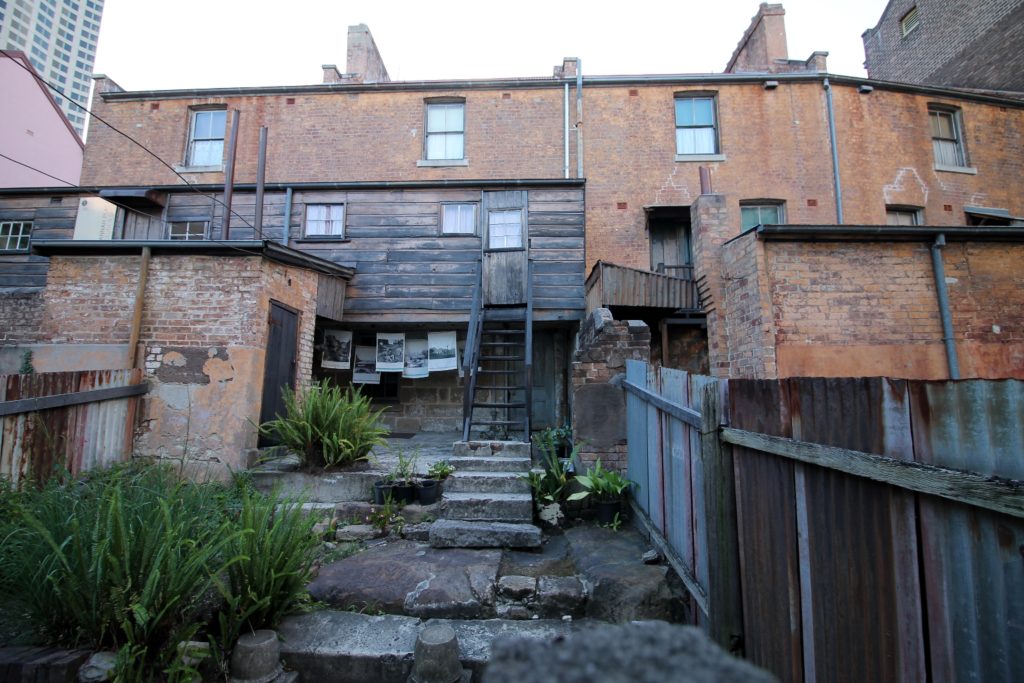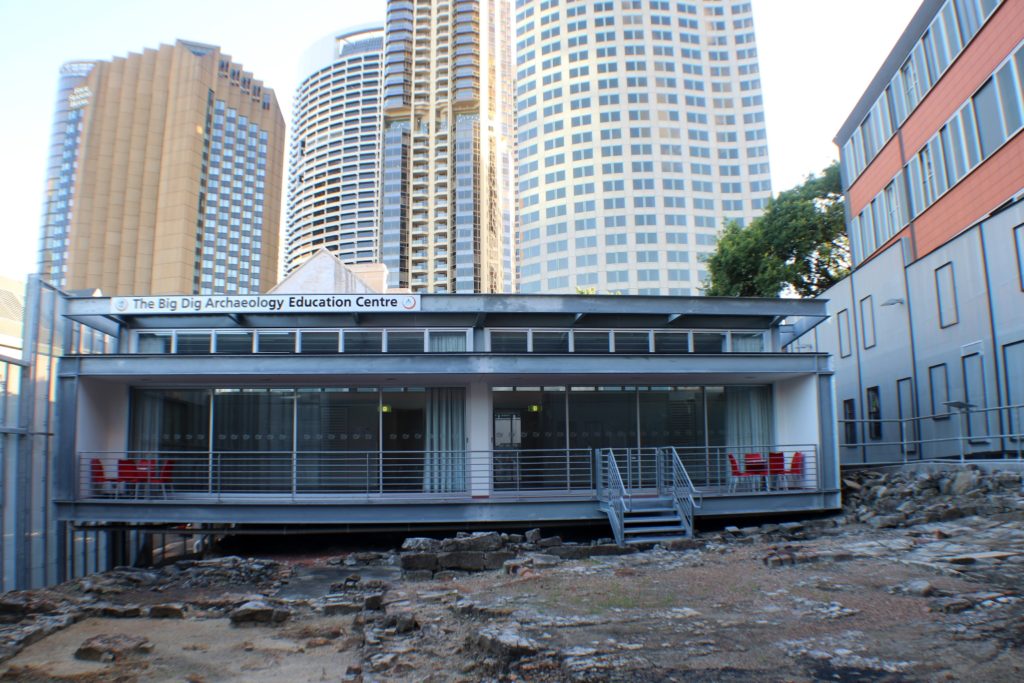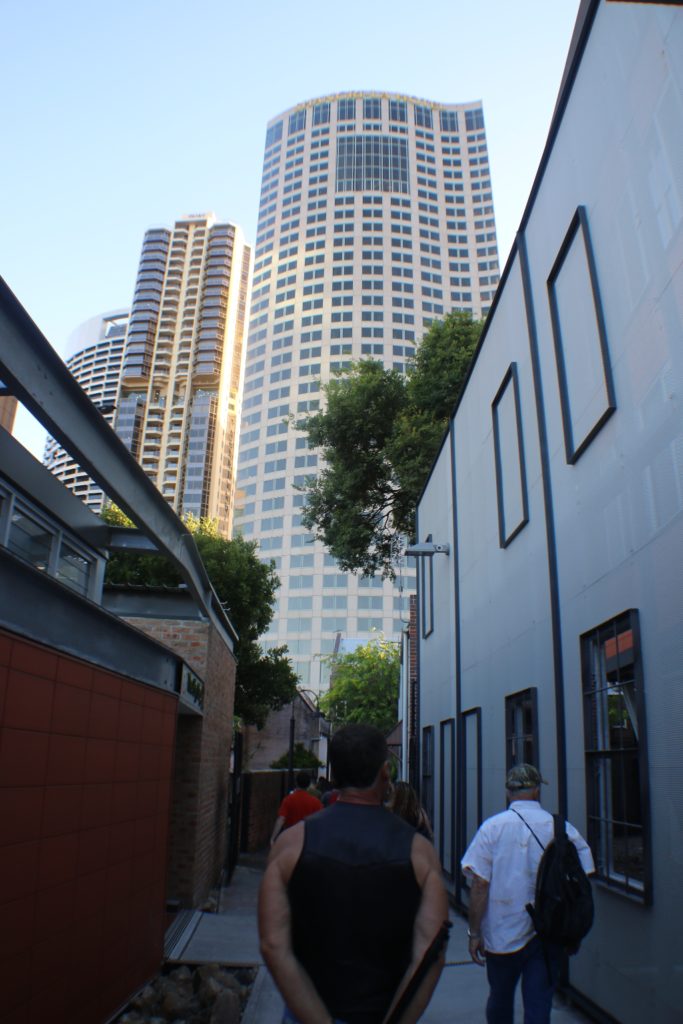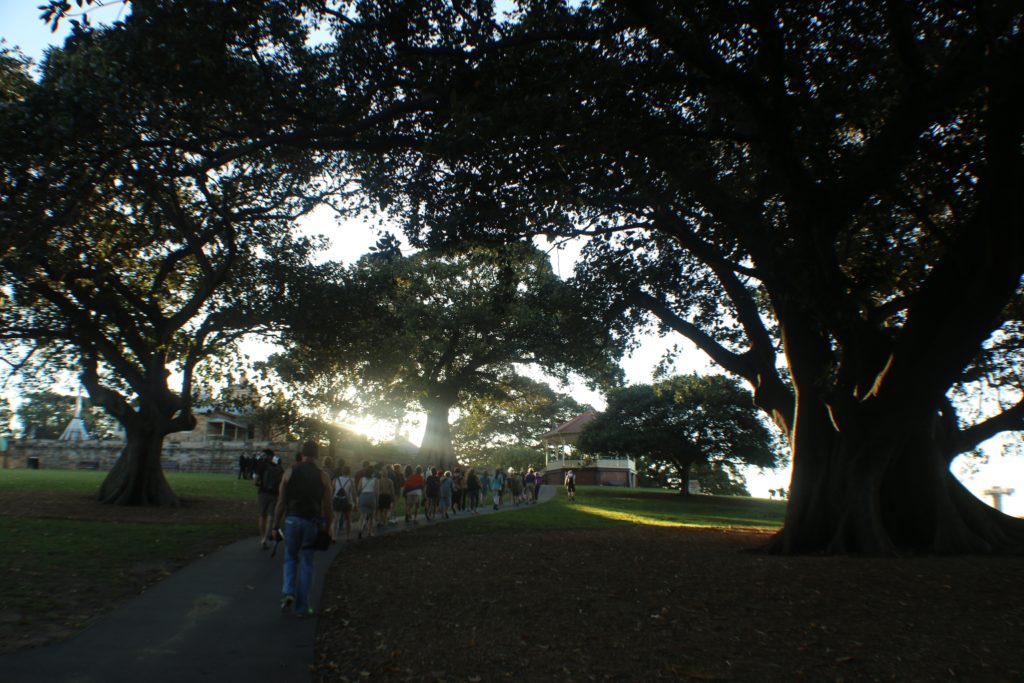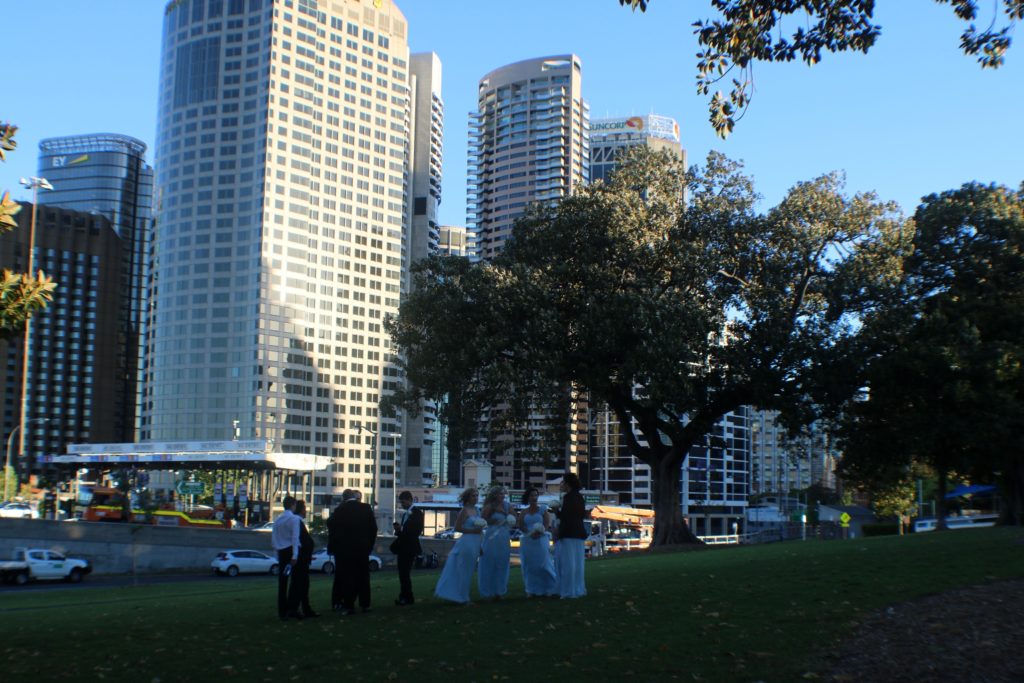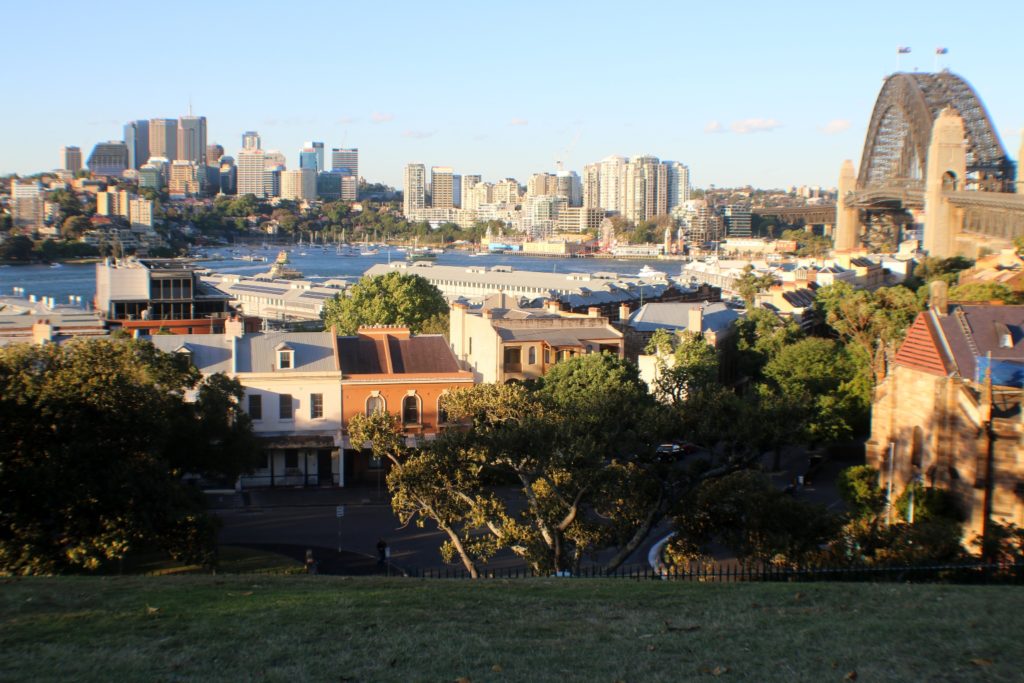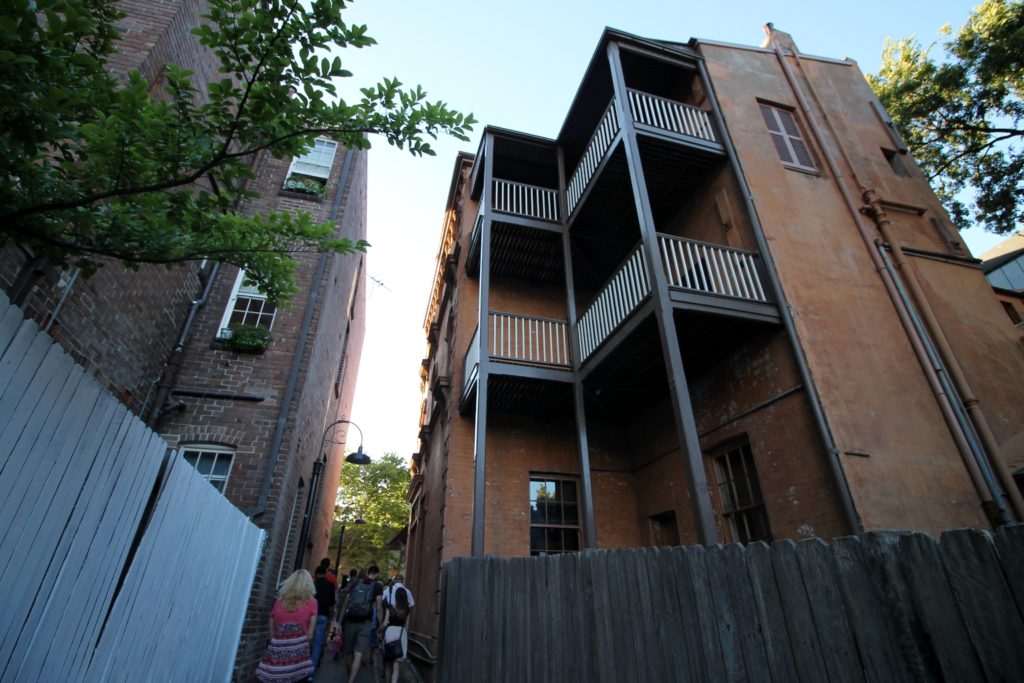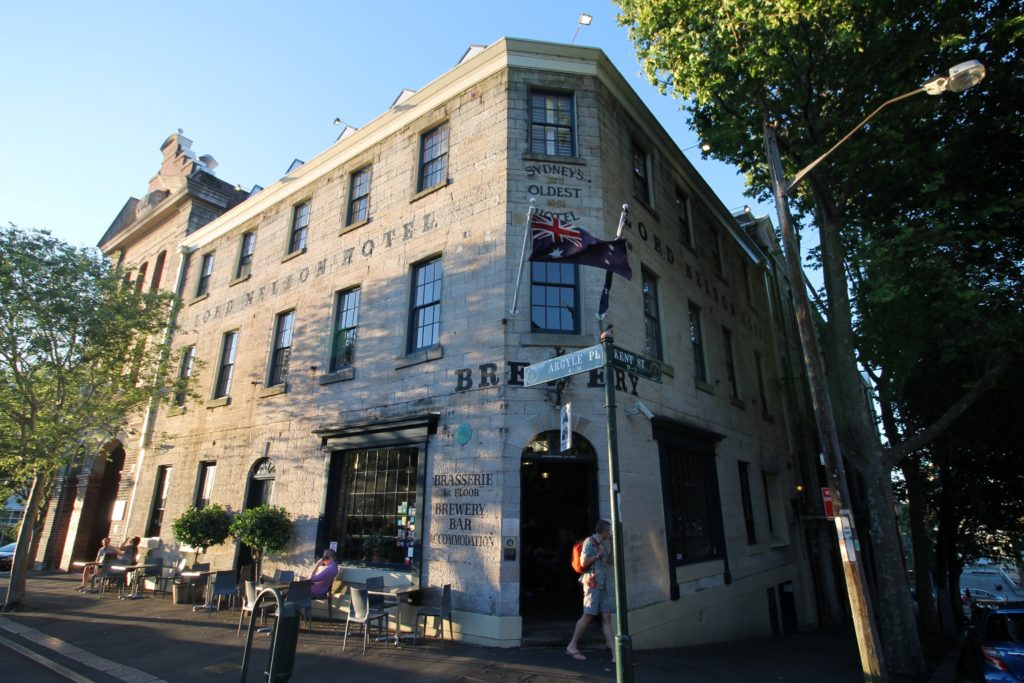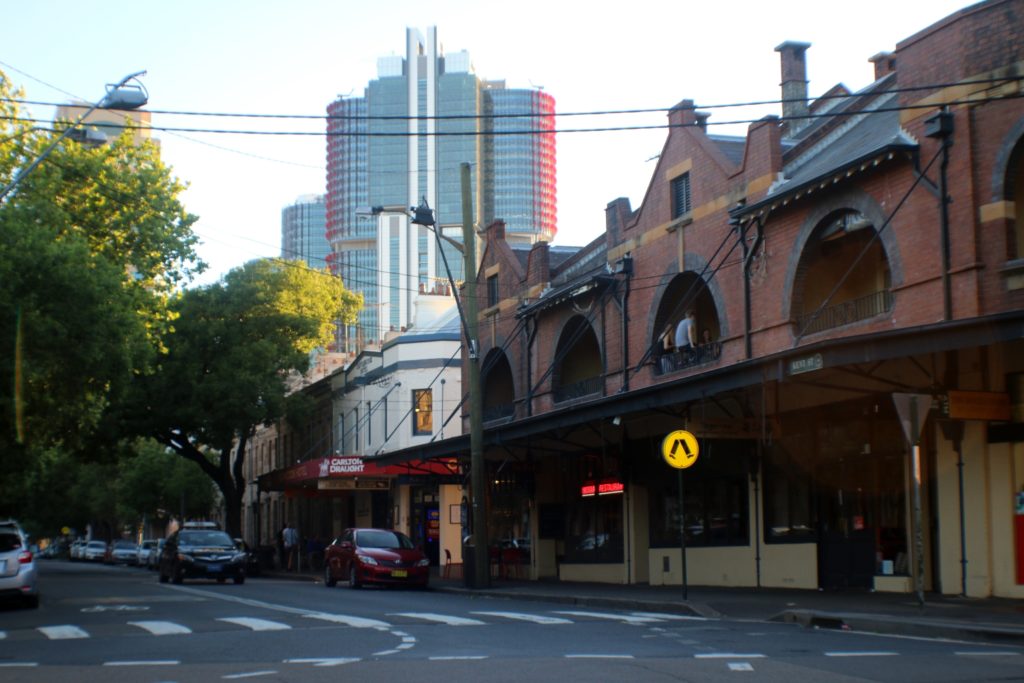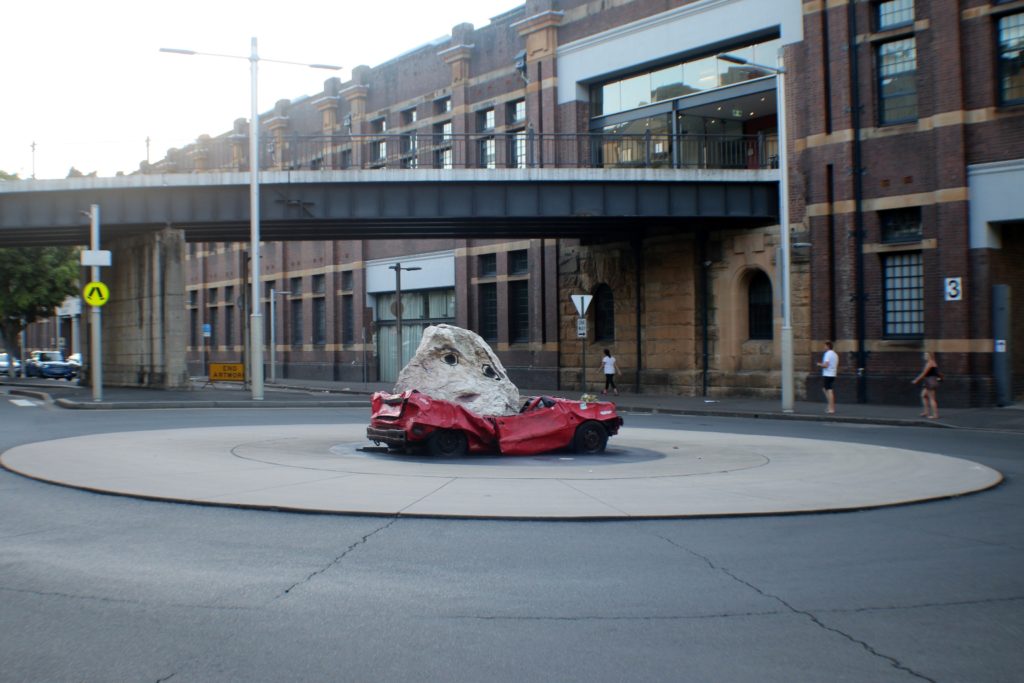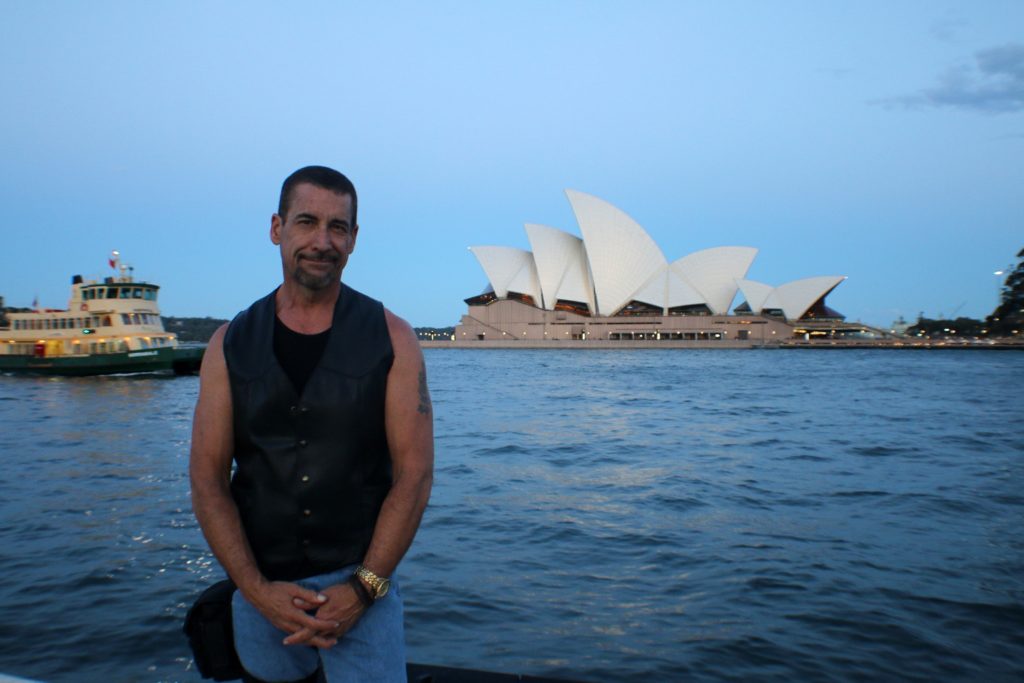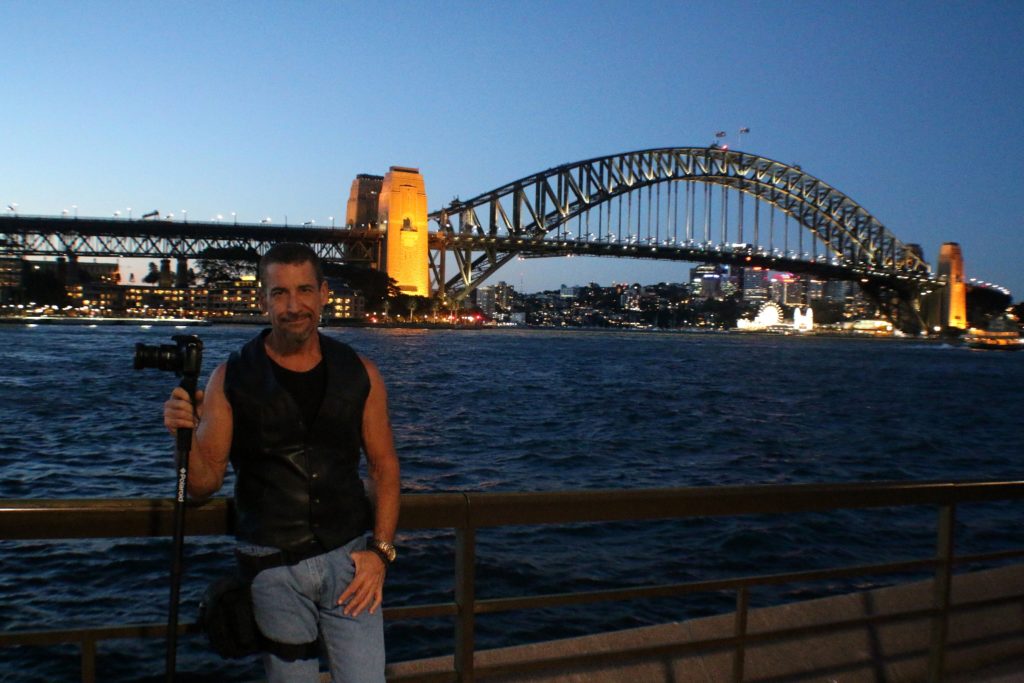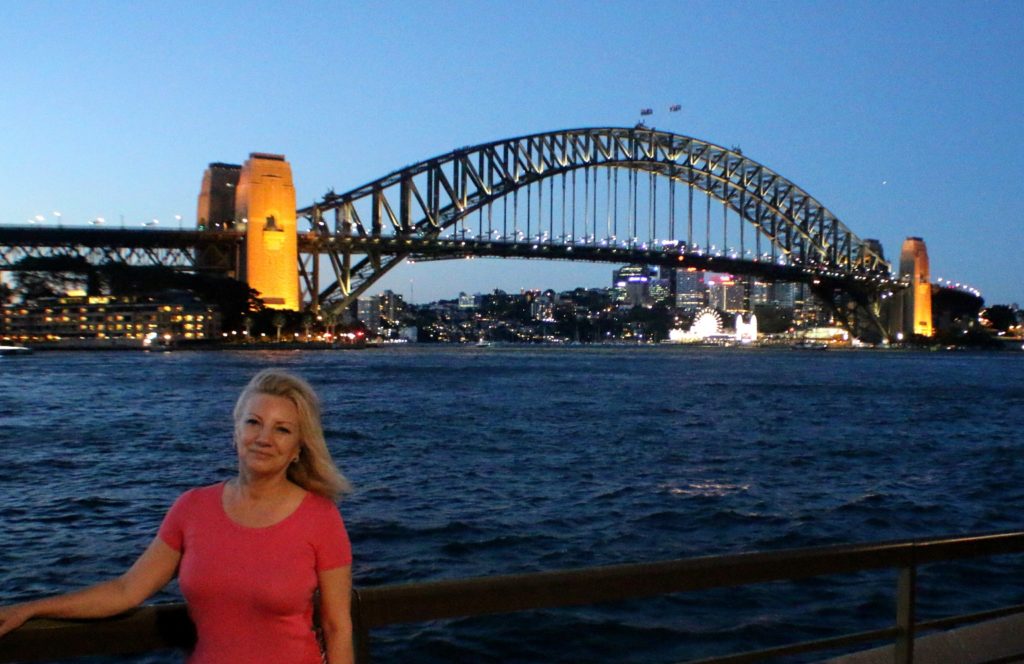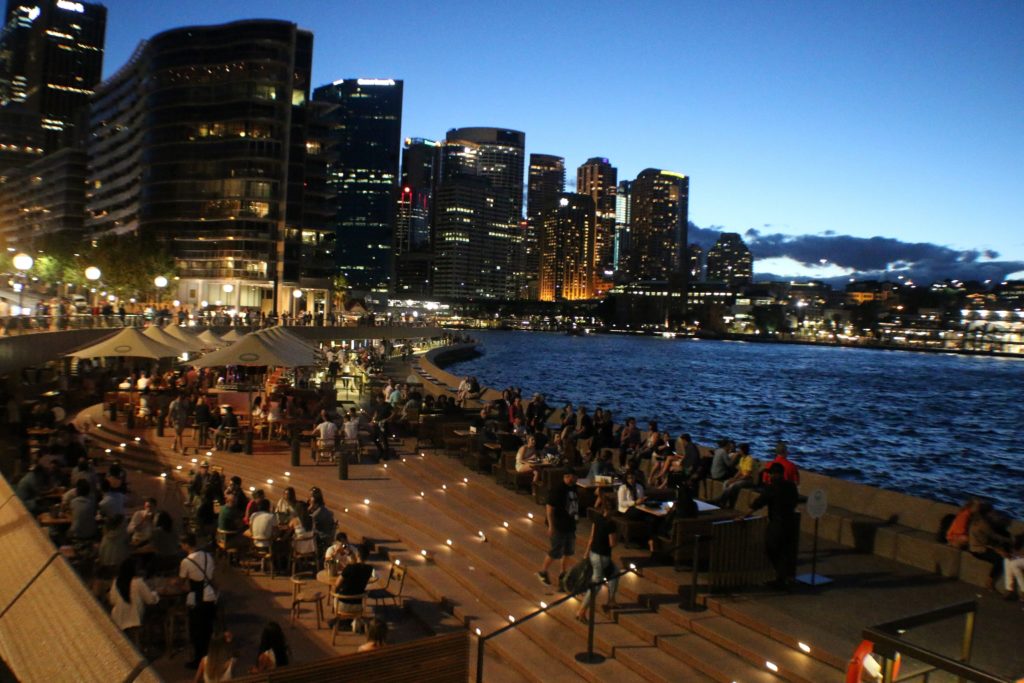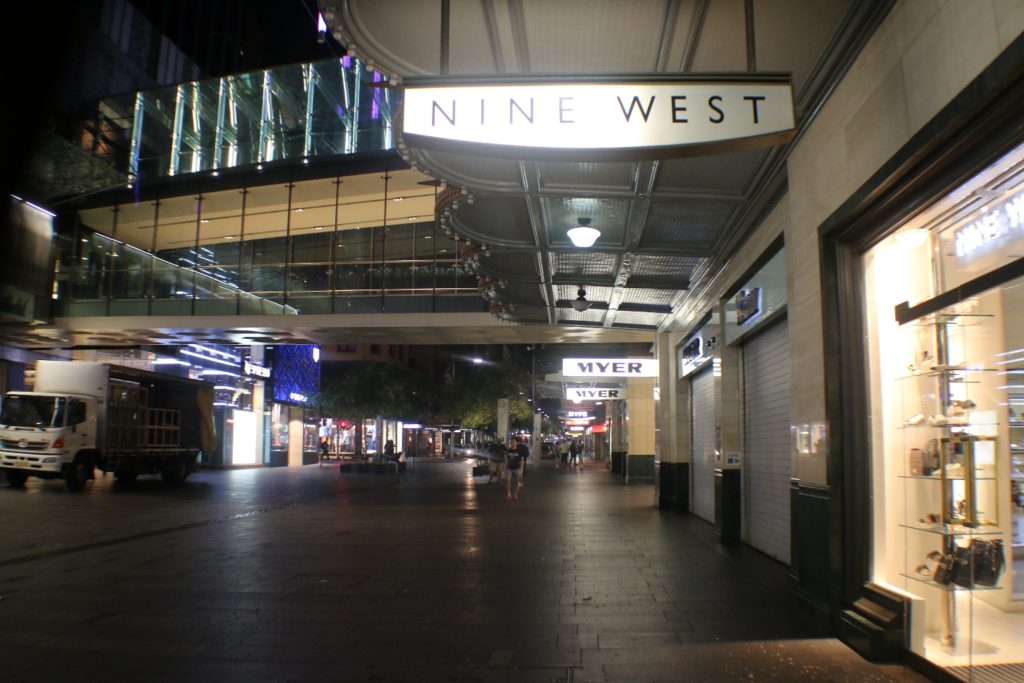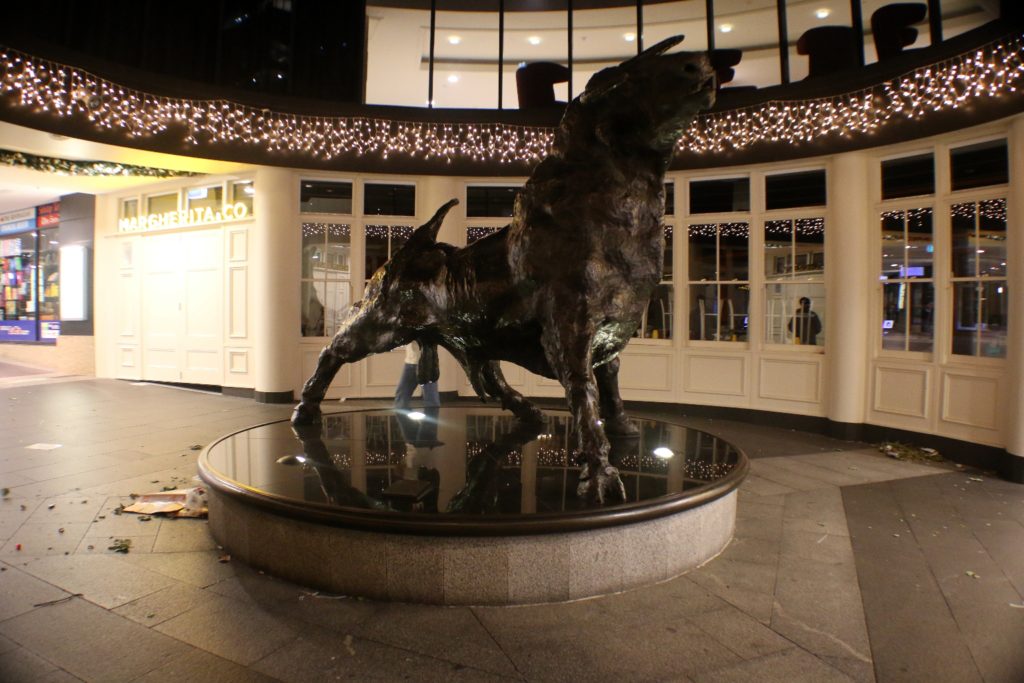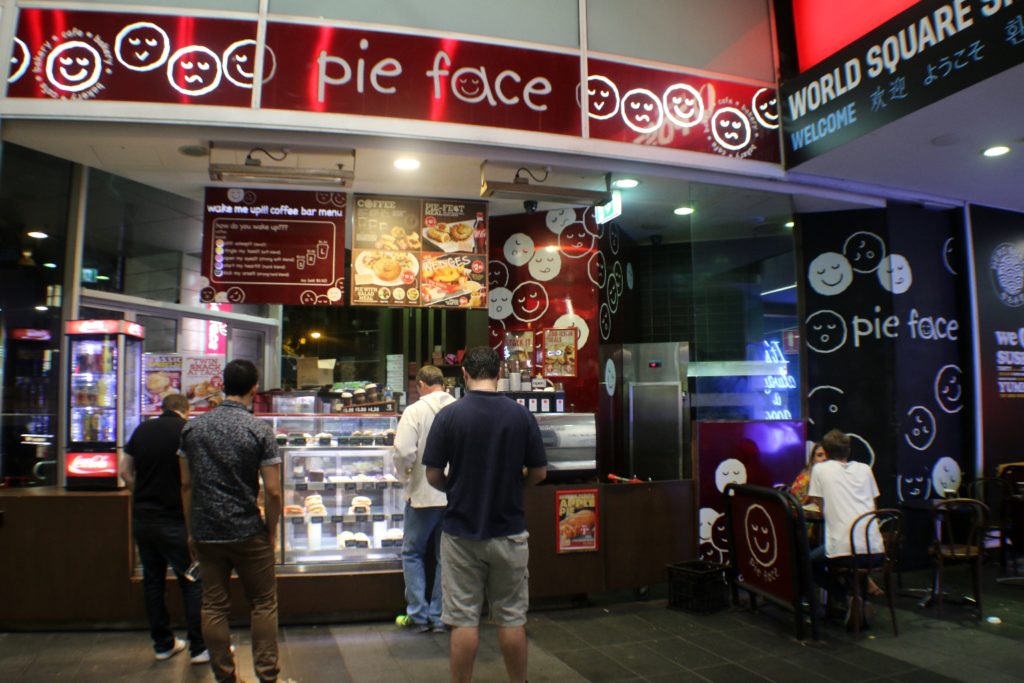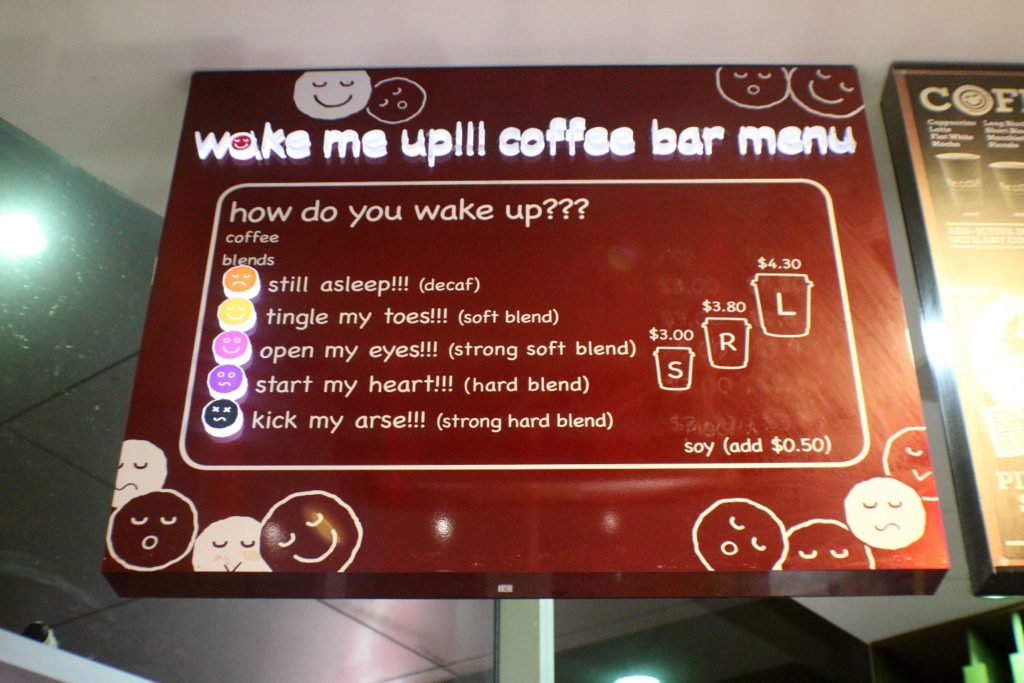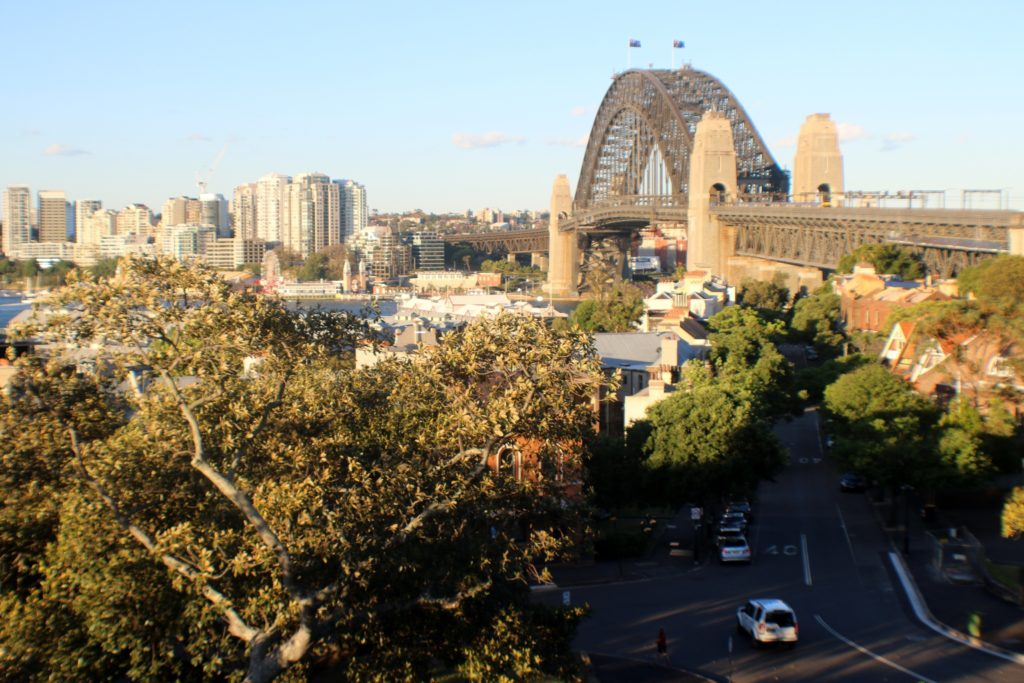
The Rocks is the oldest historic part of Sydney’s city center. This area is a reminder of the colonial era and a convict past in Sydney. Dave and I signed up for the Rocks Walking Tour, which claimed to provide an entertaining portrait of Australia’s first European settlement of 1788.
The Rocks historic area was once home to the Gadigal aboriginal people and later became the country’s first site of European settlement. The name of the Rocks comes from the rocky coast on the west side of Sydney Cove, where the convicts pitched their tents.
Today, more than 100 heritage sites and buildings jostle along the narrow streets including Sydney’s oldest surviving house, Cadman’s cottage, built in 1816. The cottage was once home to John Cadman, a coxswain in the colony, assigned to look after the ships. For many years it was an information center but unfortunately, it is no longer open to the public. We started our walking tour here, at Cadman’s Cottage.
Here is the statue of Captain William Bligh near the Cadman Cottage. Vice-Admiral William Bligh was an officer of the British Royal Navy and a colonial administrator.
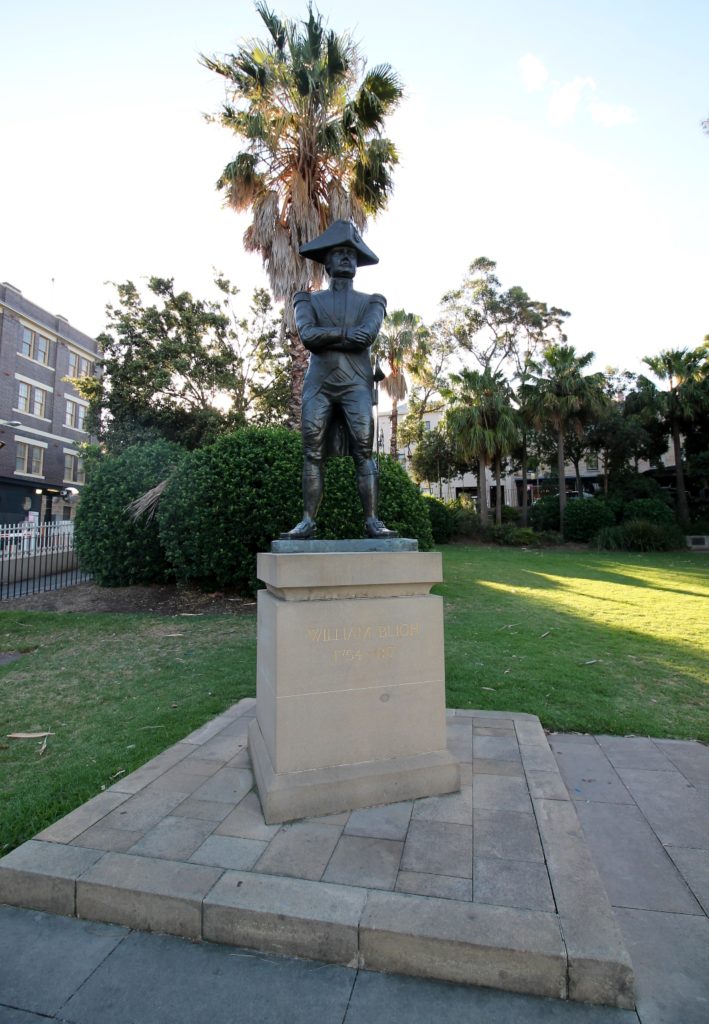
The steep, higgledy-piggledy streets of The Rocks sprawl out to the western side of Circular Quay and the imposing steel arch of the Sydney Harbour Bridge.
Then, we strolled along the Rocks’ present historic streets, cobbled alleys and narrow laneways browsing and discovering the delightful shops and charming cafes.
We followed our guide through backstreets that were largely built by convict laborers. Convicts carved sandstone cliffs into blocks that were used to construct roads and homes in the fledgling colony. The tour guide told us about the days when it was considered a dangerous slum; hard to believe when passing the fashionable restaurants and boutiques that dominate the area in modern times.
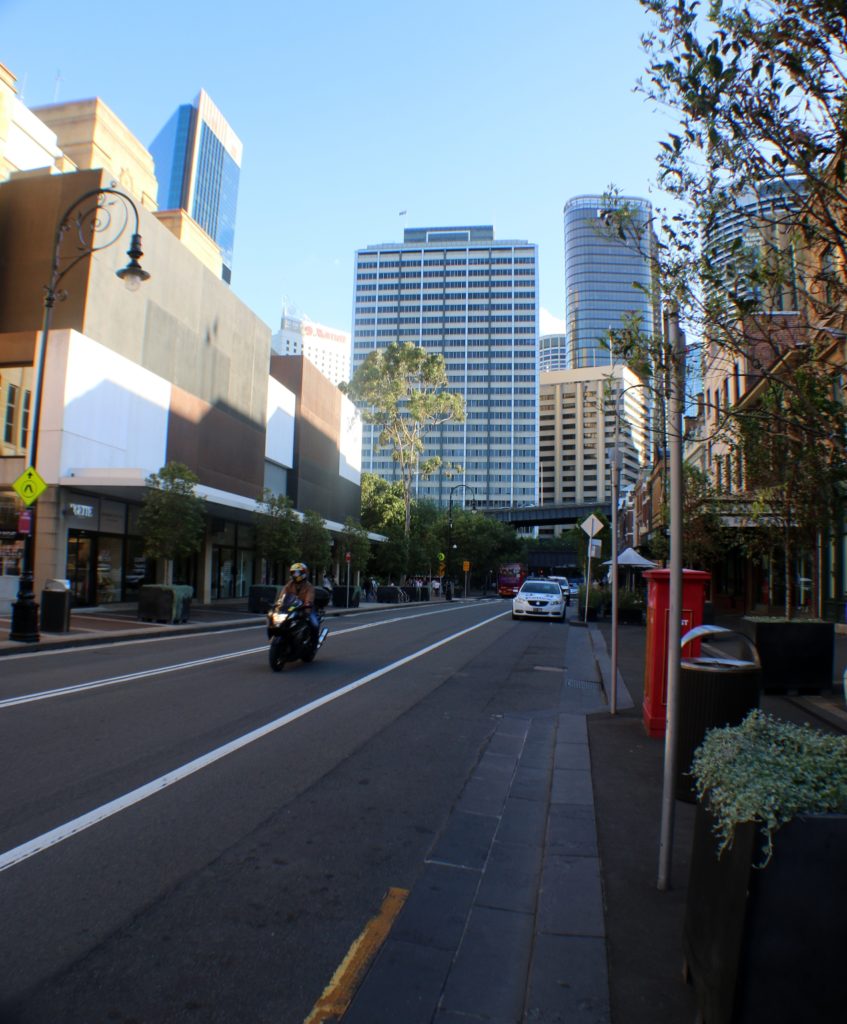
This narrow walkway has been known as Suez Canal for over 150 years because of the water runoff that rushed down the lane after rain. This narrow passageway at one point became an open sewer. Understandably, it drew the nickname “Sewers Canal”. It was later filled in but for most of the 18th century was the haunt of prostitutes and gangsters. It was notorious as a lurking point for members of the Rocks Push, a street gang that relieved many drunks of their wallets in the latter part of the 19th century.
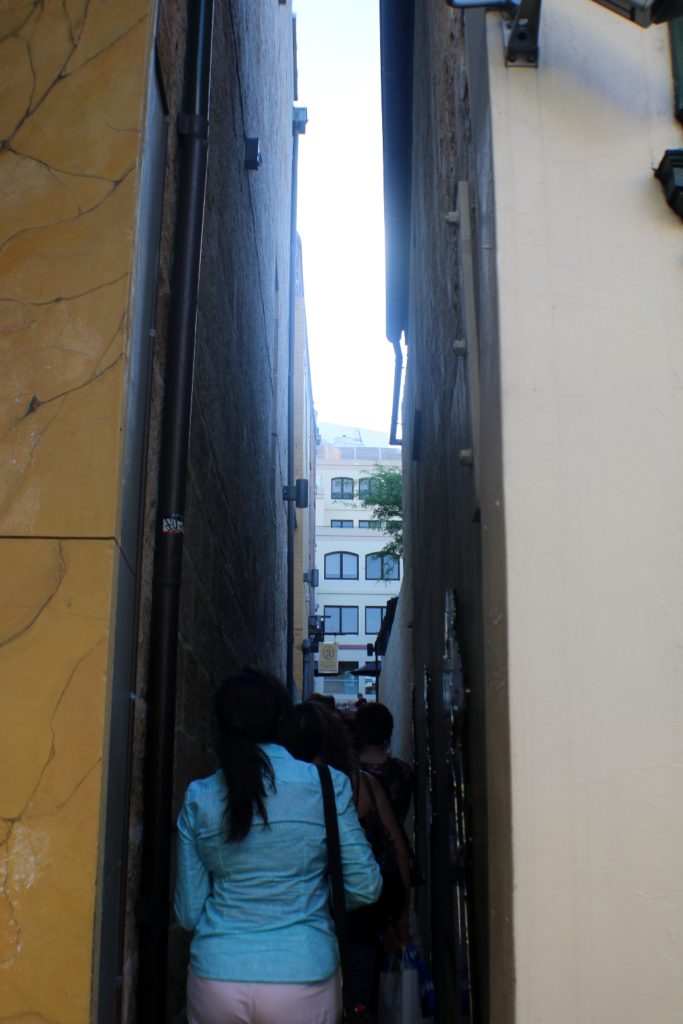
Plaques along Suez Lane tell stories of the area.
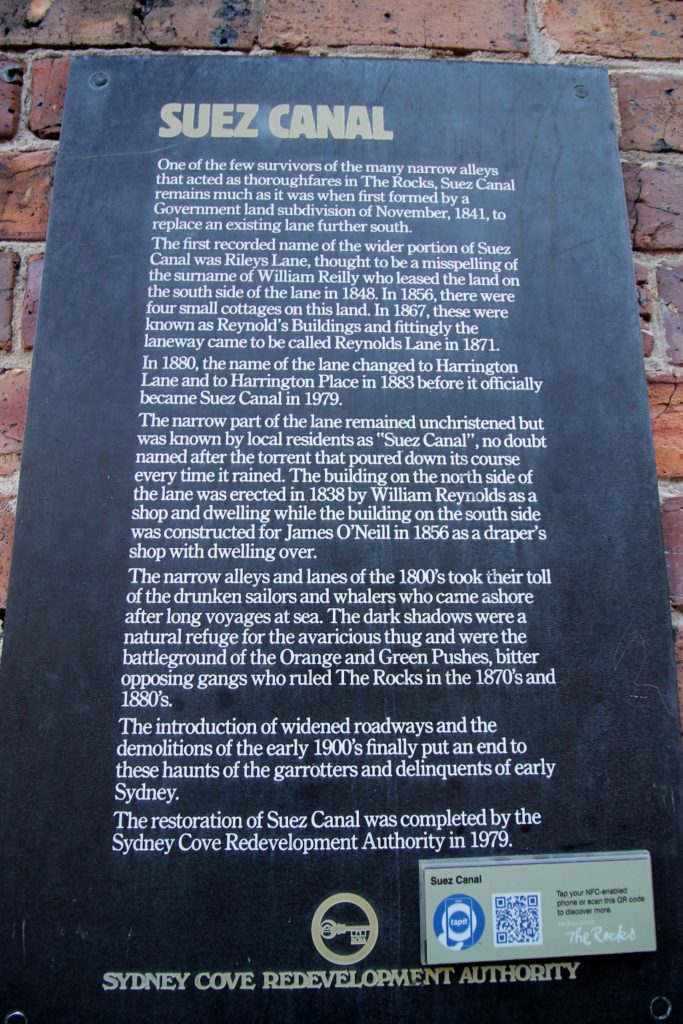
We walked by one of the cute local markets in the Rocks area. We were told by our tour guide, that the weekend markets at the Rocks are where you can find local artists’ hand-made souvenirs, organic food and designer jewelry in a relaxed and friendly atmosphere.
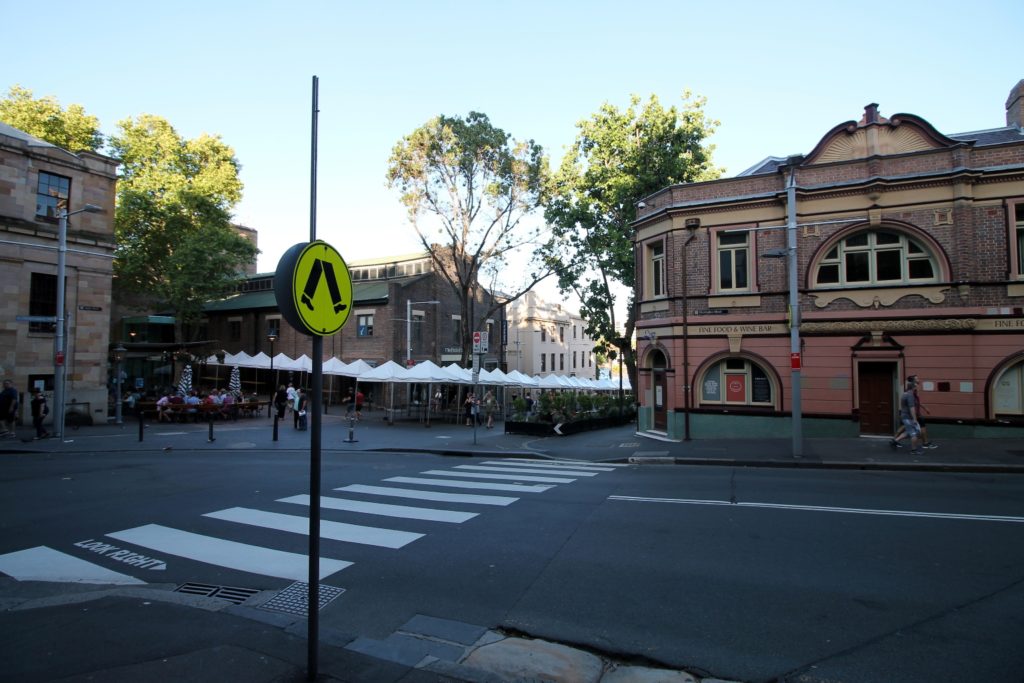
Next, we approached a small walkway with a sign indicating Nurses Walk turn. The Nurse’s Walk winds through a network of lanes and passageways. In 1900 the bubonic plague spread throughout The Rocks area. Following the arrival of the First Fleet, female convicts were picked to be nurses for the makeshift hospitals set up in The Rocks. The area is now known as Nurse’s Walk. One of the most noted nurses to arrive in Sydney, was Lucy Osburn and she is honored with a plaque along Nurse’s Walk.
Our tour guide told us a few interesting stories of murders, muggings and mysteries in The Rocks.
Here, we approached Susannah Museum. Dave is taking a picture of it over the fence. 🙂
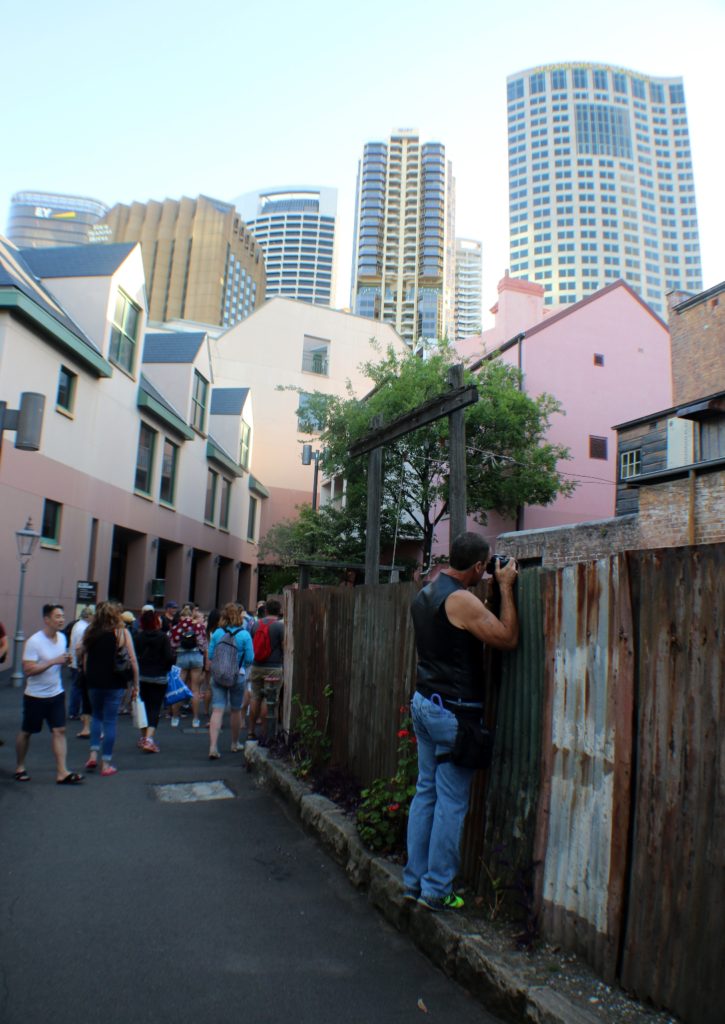
Susannah Place, this Sydney Living Museum’s property, features a terrace of four houses built by Irish immigrants in 1844 that was home to more than 100 families. Each home has been preserved as it was in 4 different decades. The museum can only be visited on a guided tour.
The Big Dig excavation site was our next stop. The official name for the site is the ‘Cumberland/Gloucester Streets Archaeological Site’, however during the major archaeological excavations in 1994 it was more often referred to as ‘The Big Dig’. The name stuck and has been carried forward as The Big Dig Archaeology Education Centre. More than 750,000 artifacts were unearthed as well as brick and sandstone remains of about 30 buildings, some dating back to the 1790s.
Built above The Big Dig archaeological site, the award winning Sydney Harbour YHA combines modern accommodation facilities with a heritage experience and stunning panoramic views of Sydney Harbour.
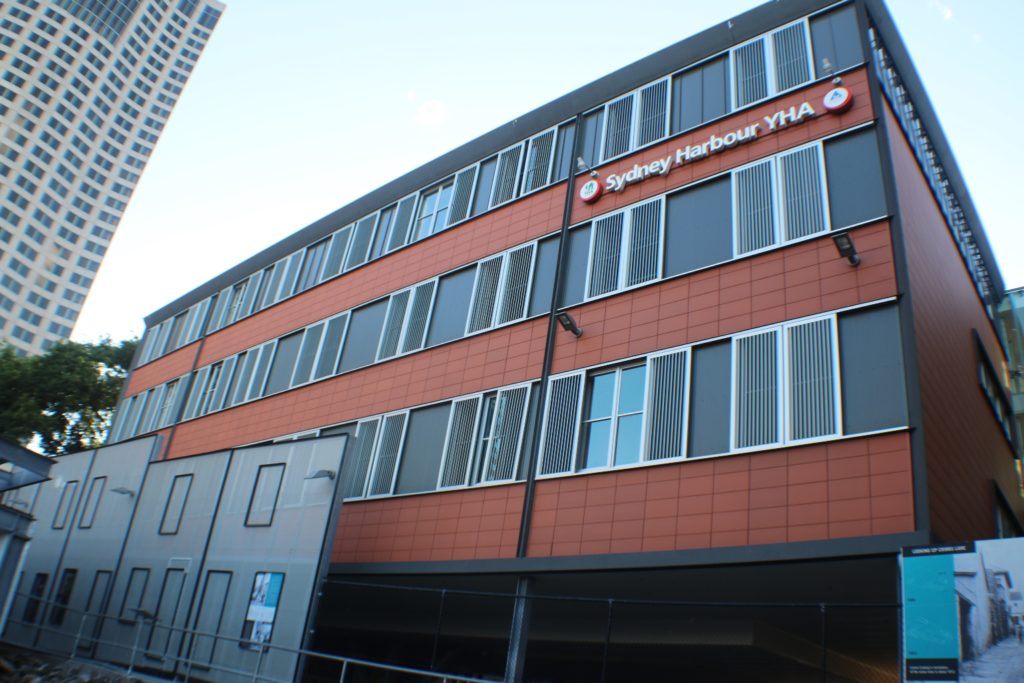
This historic part of Sydney nestled in the shadow of city skyscrapers.
Walking one of the many flights of steps in The Rocks.
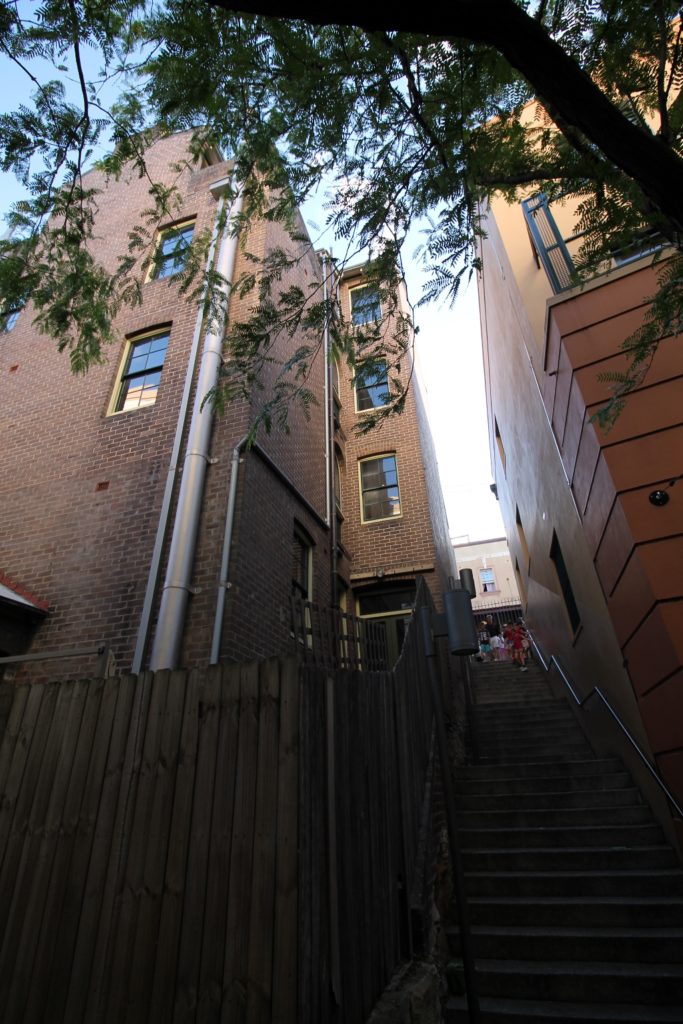
Our tour route passed through Cumberland Street Tunnel in The Rocks area. According to our tour guide, it was a tradition to try to leave the muddiest shoe print on the wall.
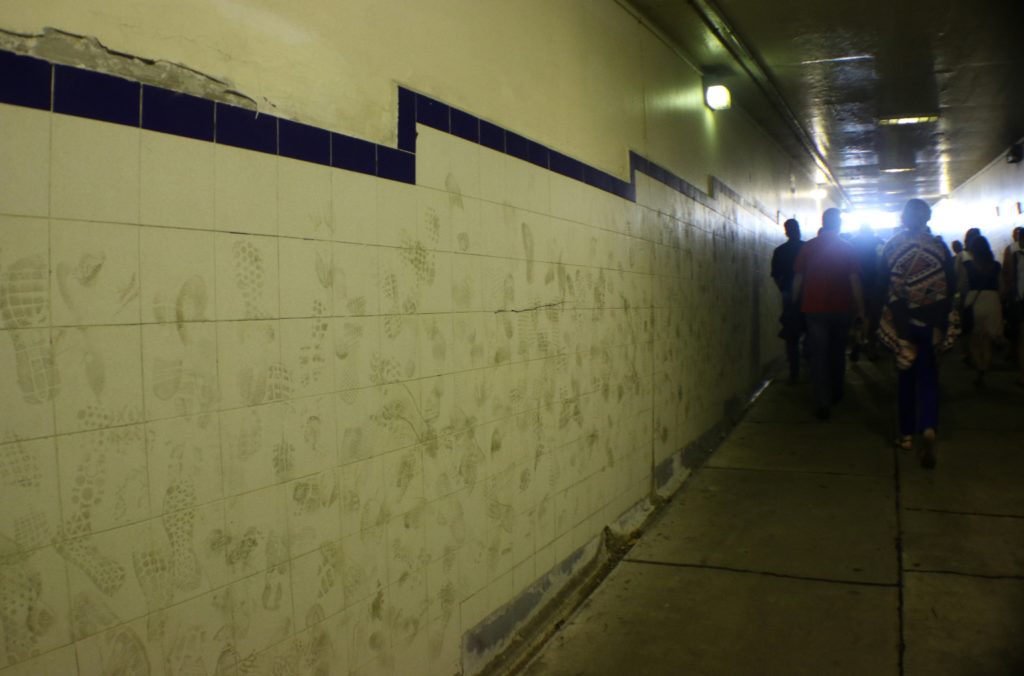
Later, we headed towards Observatory Hill Park. There are beautiful shade trees here, where the visitors can sit on the lawn and enjoy the views.
Every spot in the park is scenic.
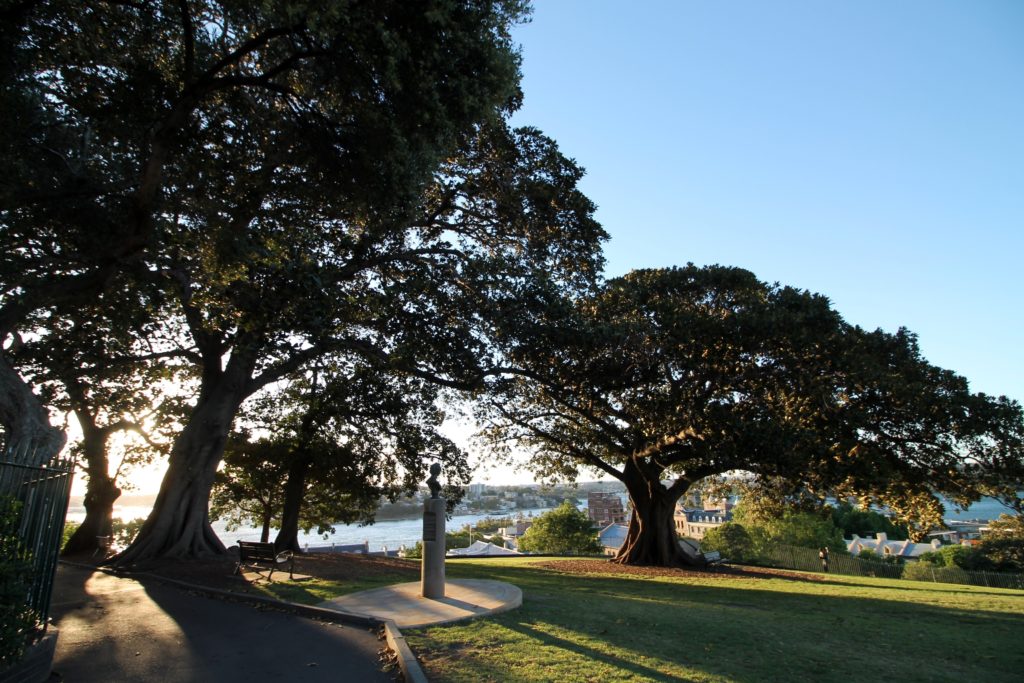
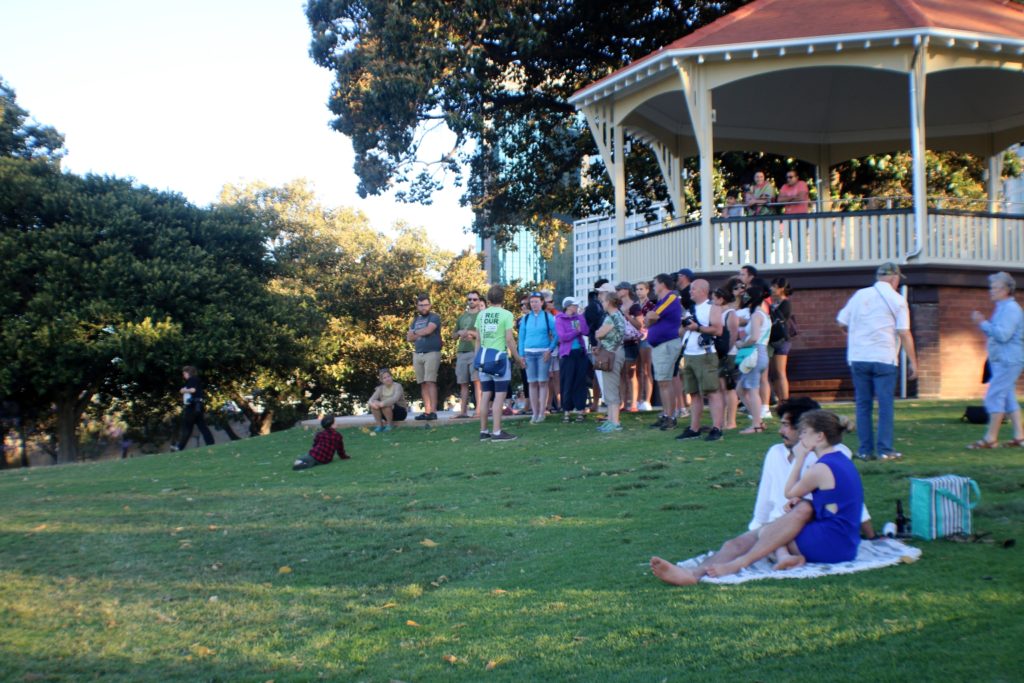
We were lucky to catch a glimpse of a wedding during our visit.
We made our way up to the top of the hill to experience glorious views of the Sydney Harbour.
Another narrow walking passage in the Rocks.
We were informed, that the Australian Hotel is a good choice if you want to taste a couple of Aussie classics on a pizza. They have options with Kangaroo or Emu! They also do beer tasting paddles although partaking in one of these might see your walk come to an end.
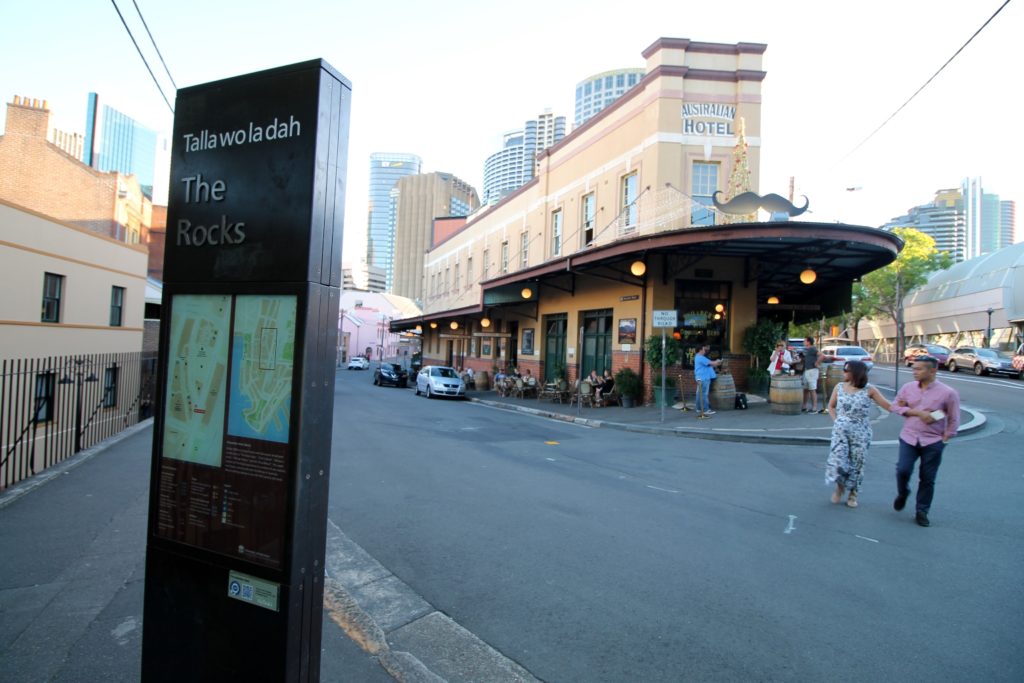
Here is the Lord Nelson Brewery Hotel, Sydney’s oldest continually licensed hotel (est.1841), located in the historic Rocks precinct and home of Australia’s oldest pub brewery.
From here, we went down towards the water. Our tour continued to the pub area, but Dave and I decided to hang out at the Sydney harbor instead and catch the sunset, but we didn’t make it in time for the sunset.
A roundabout along Hickson Road has a badly smashed up car with a boulder seemingly dropped onto it – in fact it’s an art installation by Jimmie Durham called “Still life with stone and car”. One funny interpretation of this art installation is Your “Big Dreams for God” Can End Up Crushing You.
Walking under Sydney Harbor Bridge. Sunset is almost over.
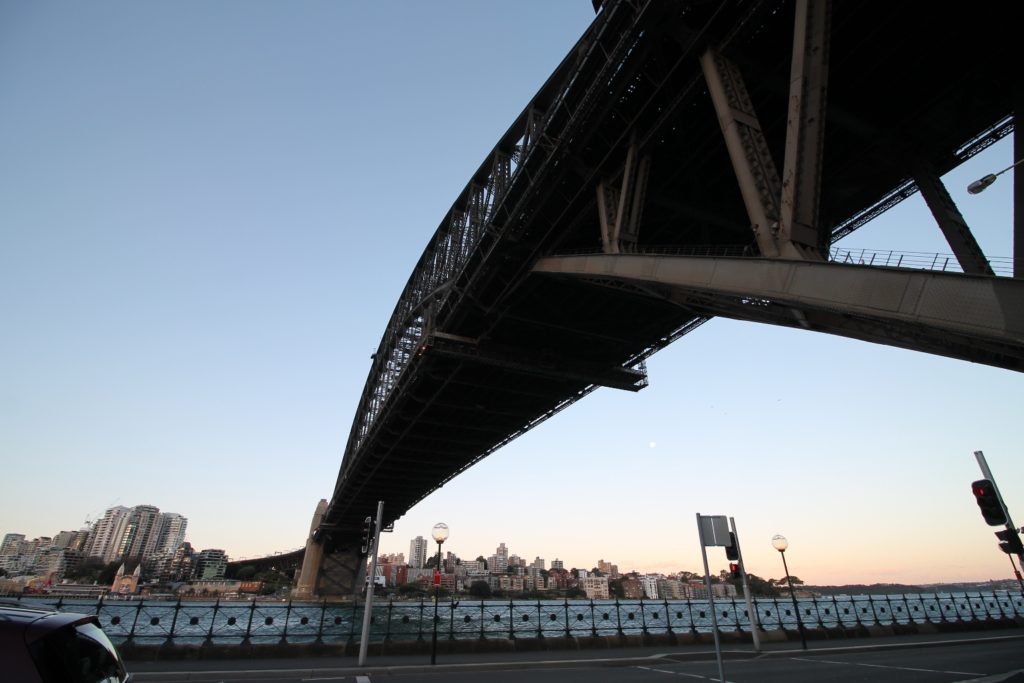
Of course, we couldn’t miss another photo op with the Harbour Bridge.
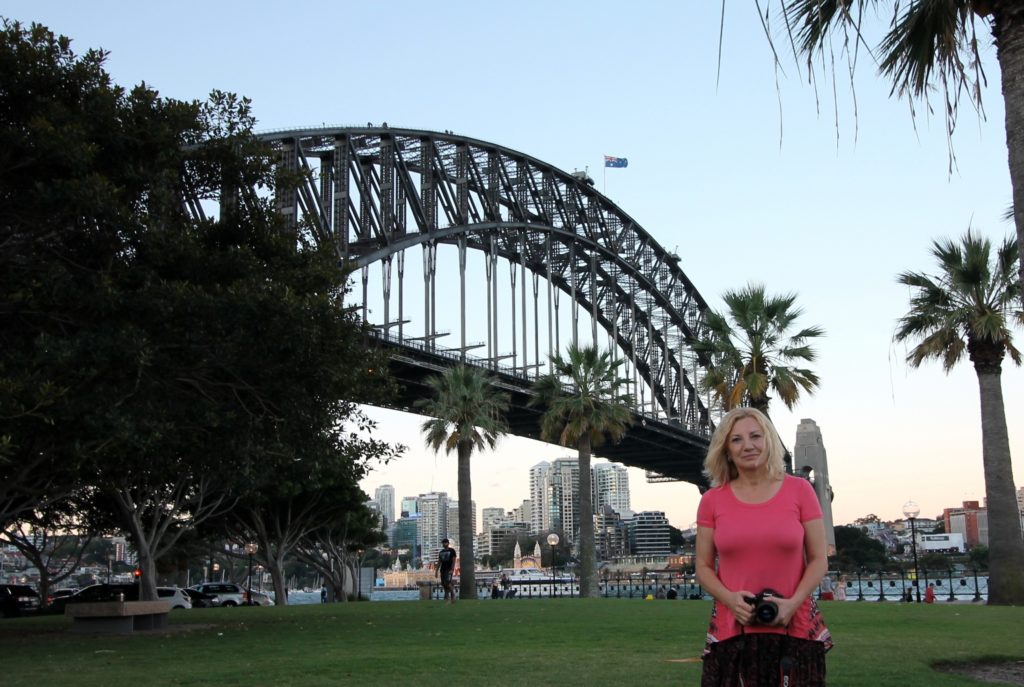
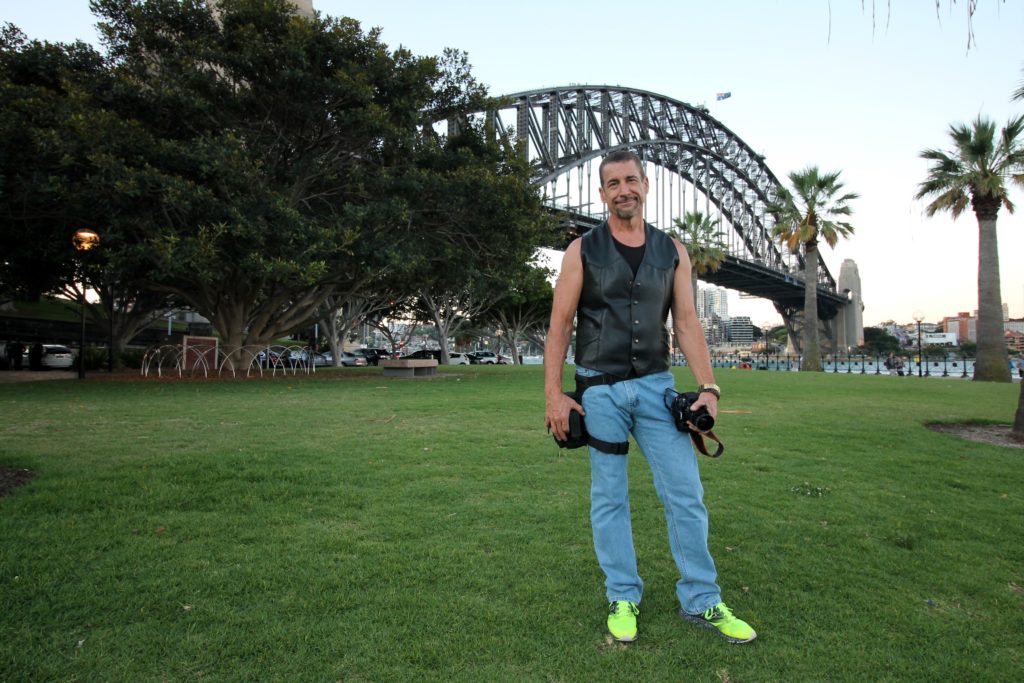
Exploring the other side of the harbor.
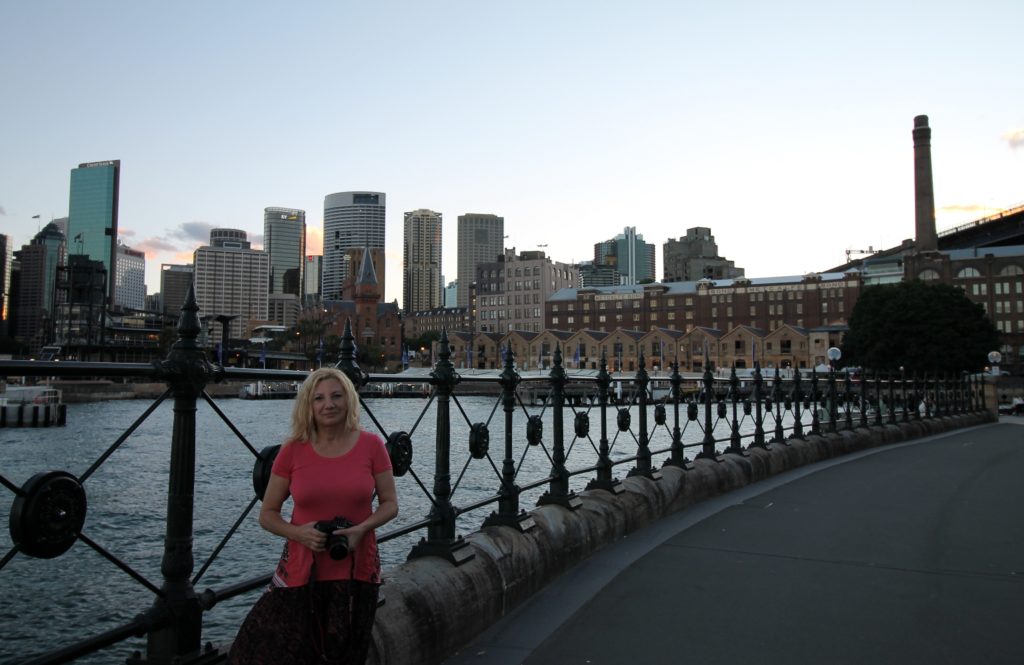
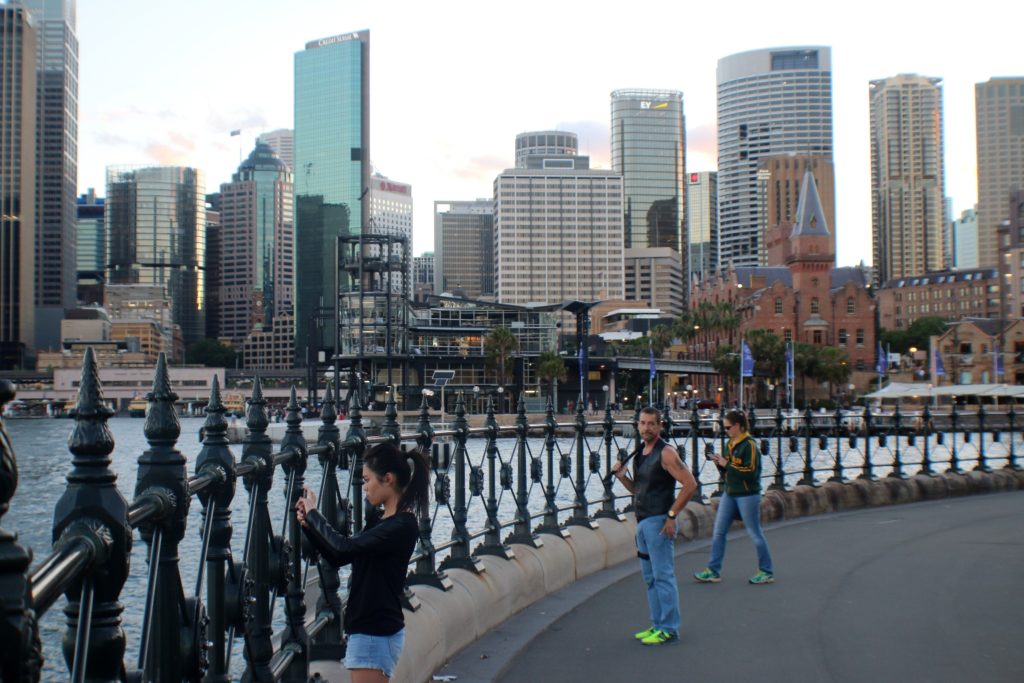
And here is a photo op with the Opera House.
The Opera House and the moon.
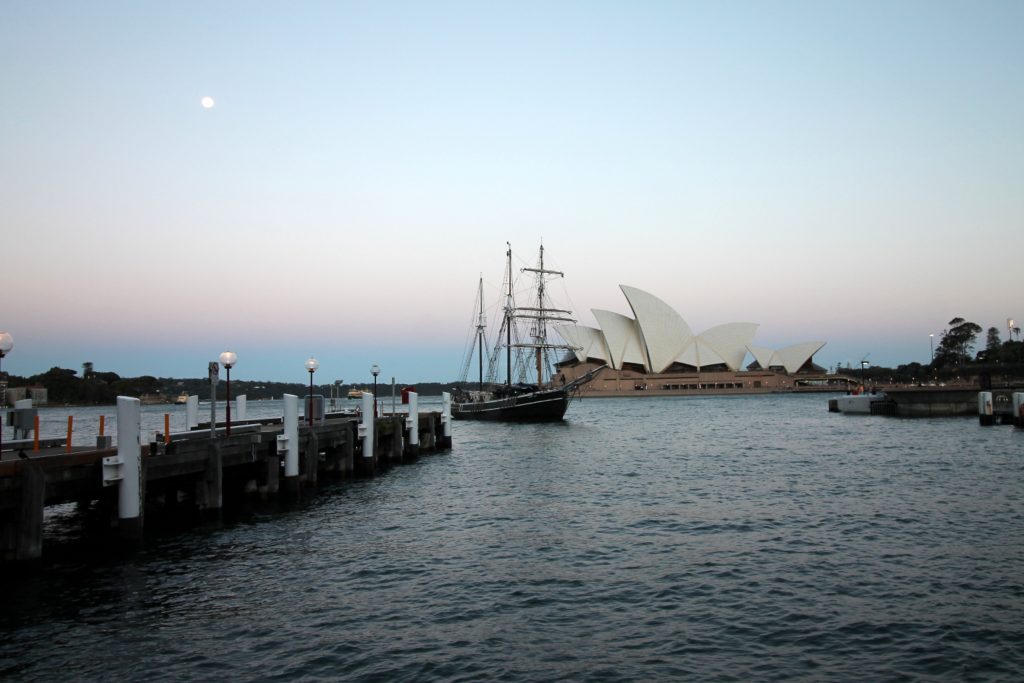
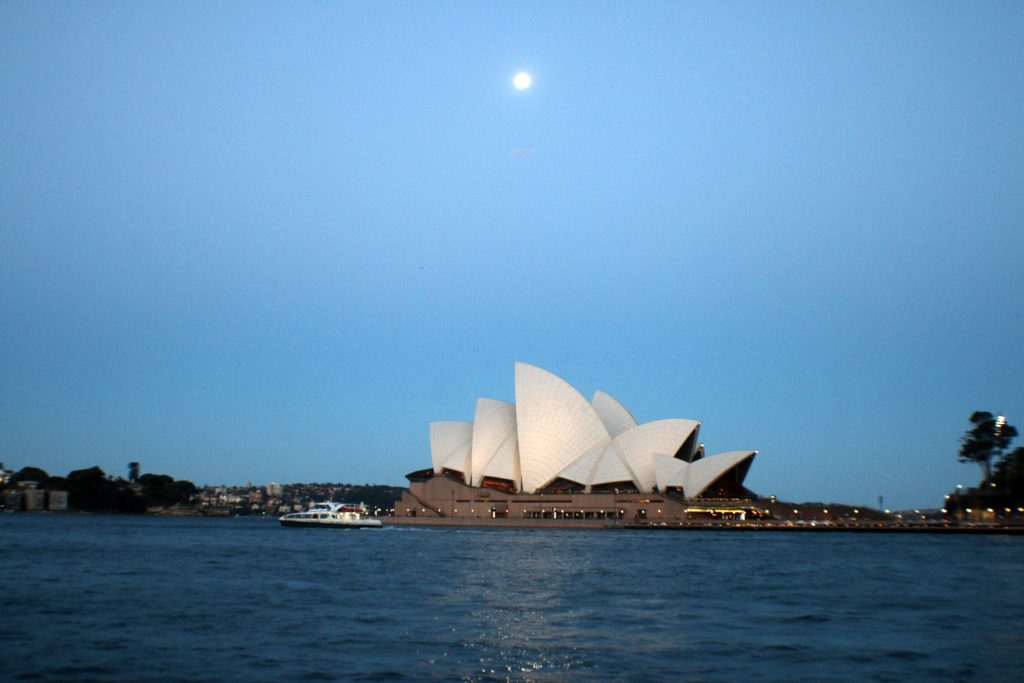
Built by convict labor in Sydney Cove, bustling Circular Quay is now home to the city’s main ferry terminal. Just in one day, from this terminal we will depart on our cruise ship to New Zealand.
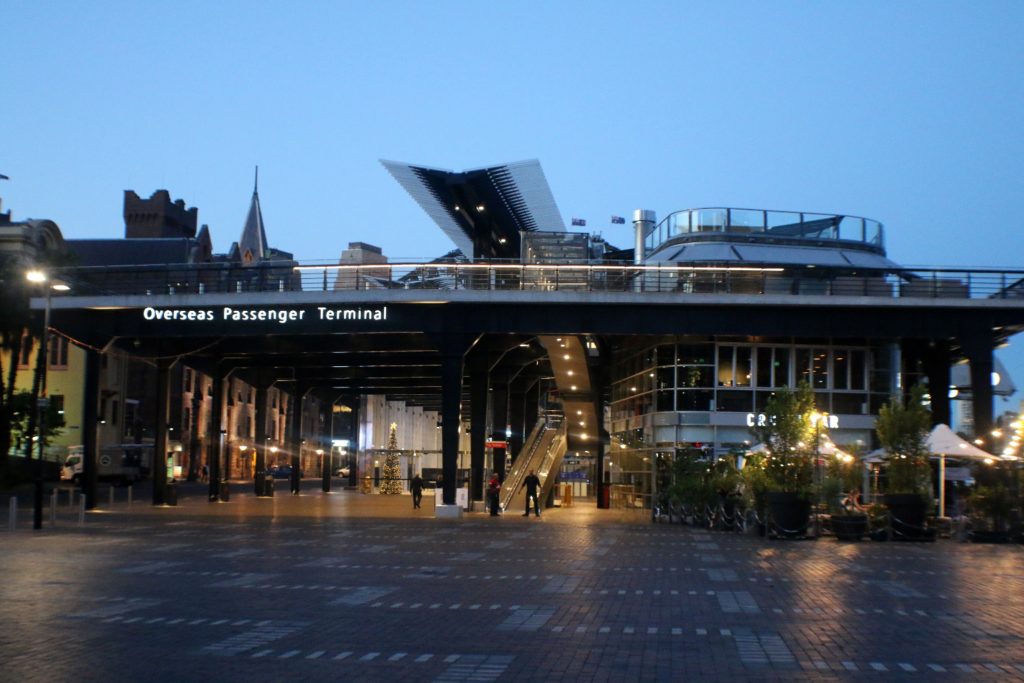
Sydney Harbour Bridge at night.
At night, Sydney Harbour comes alive. I love this place.
Sydney Streets at night. Walking from Sydney harbor to George Street on our way back to the hotel.
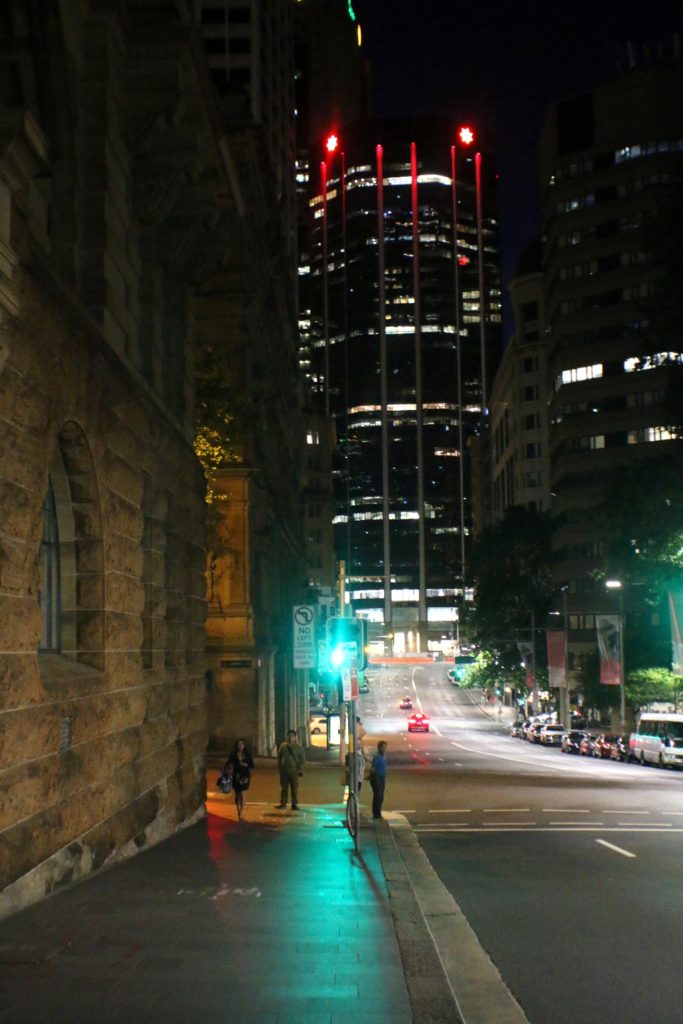
The oldest street in Australia, George Street, was once a nameless track trodden by convicts fetching supplies of water. Today, it’s one of the city’s major traffic arteries where high-rise office blocks, shops, and historic buildings converge in an incongruous jumble. It was late, so the street was pretty empty and most of the stores were closed.
Dave and I passed this sculpture every time we left the hotel. “The Challenge” is a bronze sculpture of a bull created by Alan Somerville in 1999. It stands in the middle of the Hordern Arcade in World Square, with entry from the corner of Pitt Street and Liverpool Street. The plaque reads: The bull, a mythological beast, is the embodiment of spirituality and symbolises the qualities of strength, endurance and tenacity necessary in meeting the many challenges encountered in achieving success.
I want to mention our favorite coffee place in Sydney – “Pie Face”. The coffee and snacks are delicious there. Besides, the restaurant is opened 24 hours and located very close to the hotel we stayed in.
According to pieface.com, the humble meat pie has been an Aussie favourite for many, many years which is why Pie Face is proud to be an iconic Australian pie brand that came to life in 2003. The idea of using only premium ingredients and combining this with traditional French style light, flaky puff pastry is what makes Pie Face pies delicious.
